Traces
is an experimental platform within which Kathrin Köster, Daniel Kupferberg, Marei Löllmann, Carolin Seeliger and Lee Stevens interweave their individual artistic practices to explore collaborative weaving as a method of collective labour. They create installative and processual spaces that emerge from collective action in site-specific situations. These parallel, touching or intertwined traces generate and refer to shared gestures, rather than to individual authorship

un_ravel
Galerie im Körnerpark, 2022, traces group (MareiLöllmann, Kathrin Köster, Lee St., Daniel Kupferberg, Carolin Seeliger) As part of the exhibition Enter_nature at Galerie im Körnerpark, Berlin, the participatory work un_ravel was created in November 2022. In this textile installation, the collaborative artistic platform traces explores transitional spaces in relation to the concept of sympoietics, a term questioning biological concepts of individuality, coined by the biologist Lynn Margulis and the theorist Donna Haraway. Over the exhibition period of 10 weeks, visitors are invited to participate in a tactile and cooperative process of multifaceted entanglement. Five amorphous vessels are suspended in the space, each inhabited by sympoietic structures: In constant motion, they create new tissues, unravelling what is entwined. Each vessel consists of looped threads, both firm and loose, deliberate and random. Positioned between the objects, a loom, cocooned in a thin layer of latex, invites a communal activity — weaving. Immersed in deep blue, in this seemingly utopian landscape of floes and entanglements, threads can be picked up, dropped and reworked. As the wea ving continues, the vessels begin to shapeshift, dissolving and expanding as multi-rooted networks along the loom. The resulting structures are simultaneously determined and discarded, dissolved and expanded — both beginning and end. While these processes seem to be running in opposing directions, they are inextricably linked in an almost causal chain, as they feed on the same material.
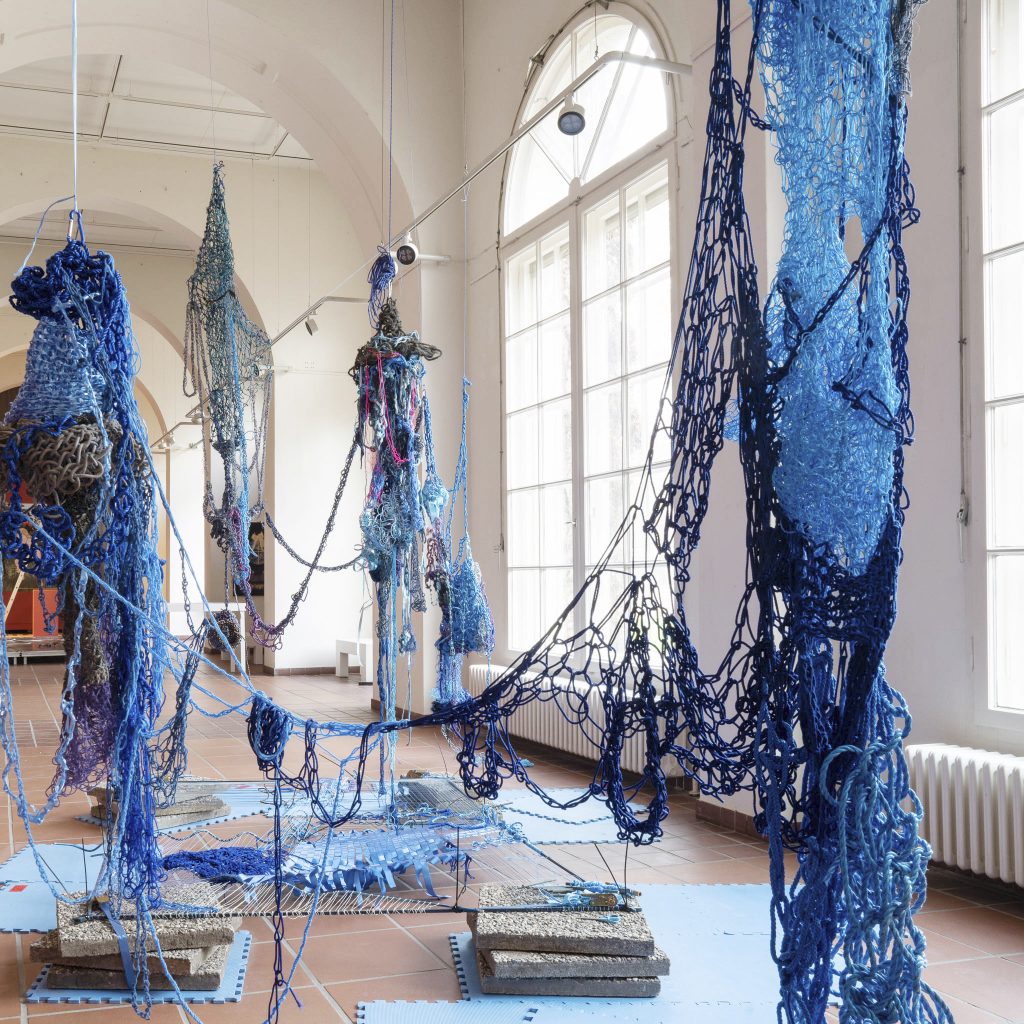
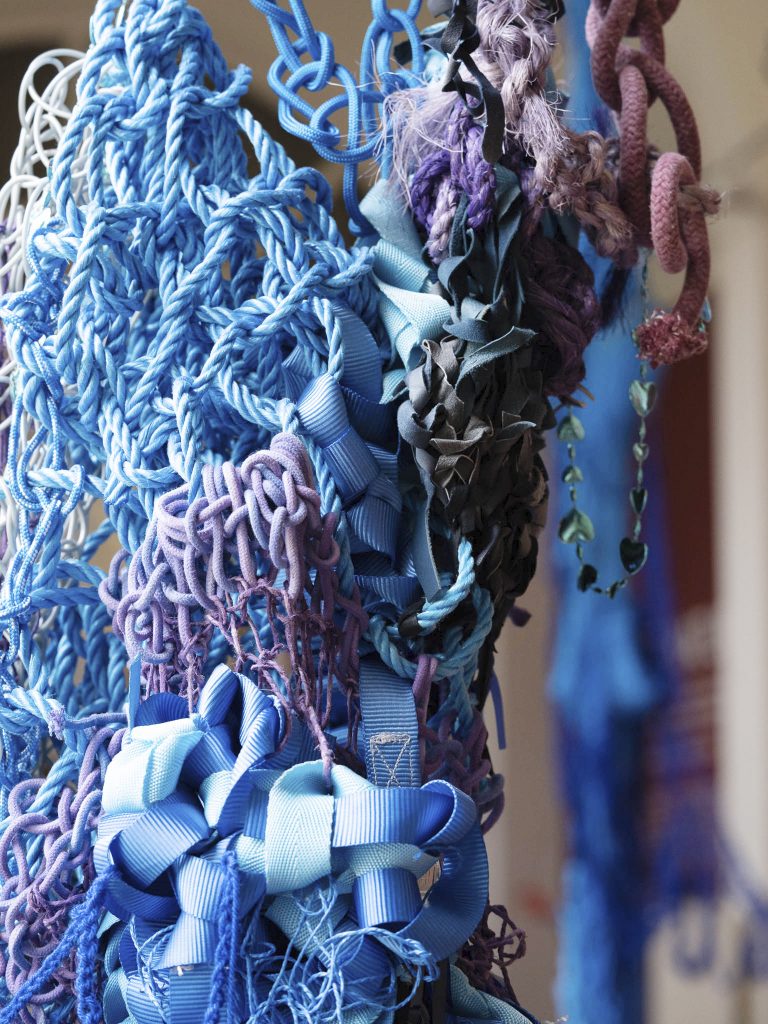
Materials
Latex rubber (latex specialist Michael)
Cotton yarn (loom warp yarn, Daniel’s mother)
Zip tie (von Tedi)
Tension belts (Hasenheide Neue Welt)
Blue nylon rope (Mimi)
Synthetic thread
Fishing net (Svalbard, analysed by Deep Sea Ecology Group, AWI)
Sheep’s wool (rummage sale Hermannstraße)
Hemp twine (scenography, Sonja)
Shuttles (incoming)
Clothes line (across the parking lot, 444)
Plastic ribbon (Corso Vittorio Emanuele II, Turin)
Bamboo rods (varnished)
Cotton cord (from Max’s mother Vea)
Garland (Eineuroplus shop)
Paving Slabs (classifieds, Ms Abbas)
Acrylic wool (stock of Mathilda)
Plastic chain (Christmas box, Lee)
Carabiner hooks (remnant stock)
Steel frame (canopy, courtesy of Seeliger)
Corn cord (pharmacy of materials, Carolin)
Burlap rope (Plus Vrouwenpolder, Kathrin)
Foam rubber mats (Interflugs and nGbK, via detours)
Blue belt, wool and cotton yarn (stock of Marei)
Tomato staves (2o46 e.V. a.m.)
Gouache (Hamburg fixation, Daniel)
Textile chalk (Aalborgian, thanks to Angela)
Leather (from David’s mother Verena)
Soft sculptures and loom, mixed medias, dimensions variable.
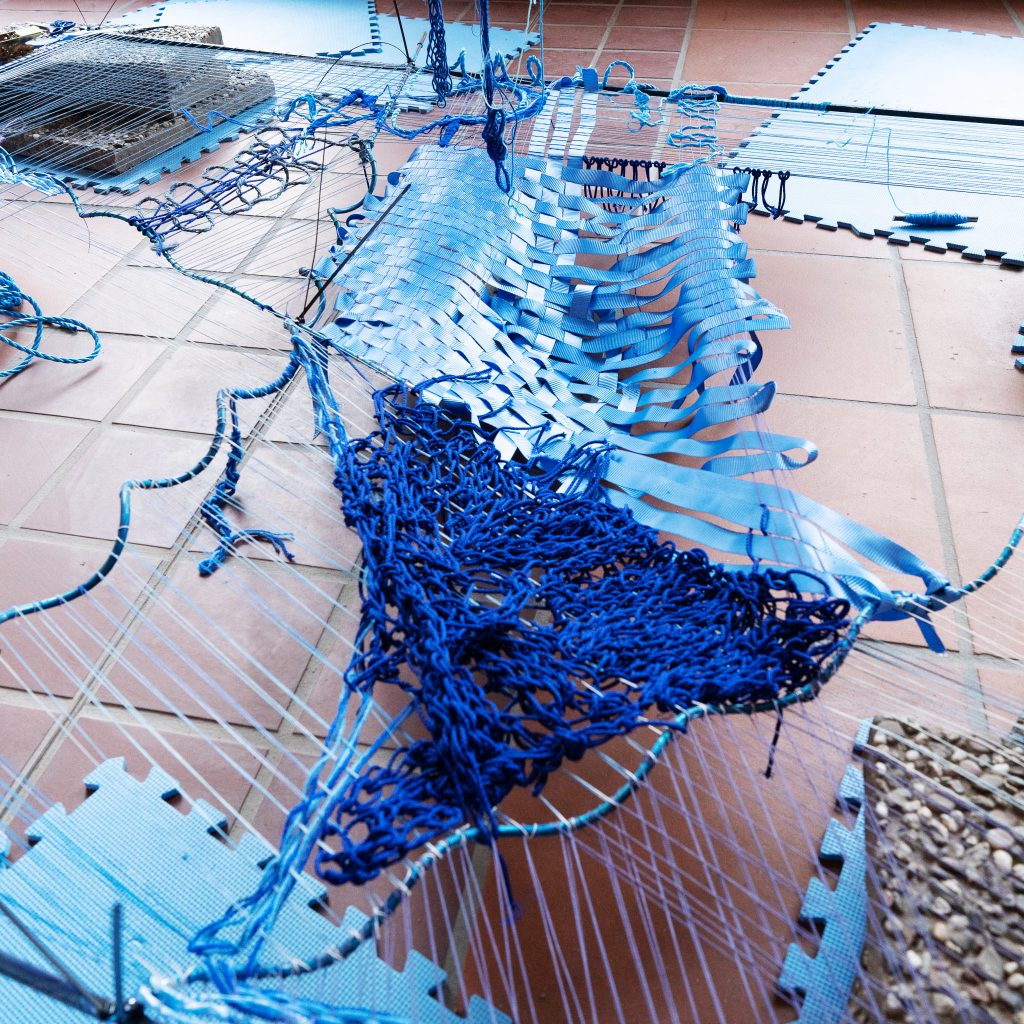

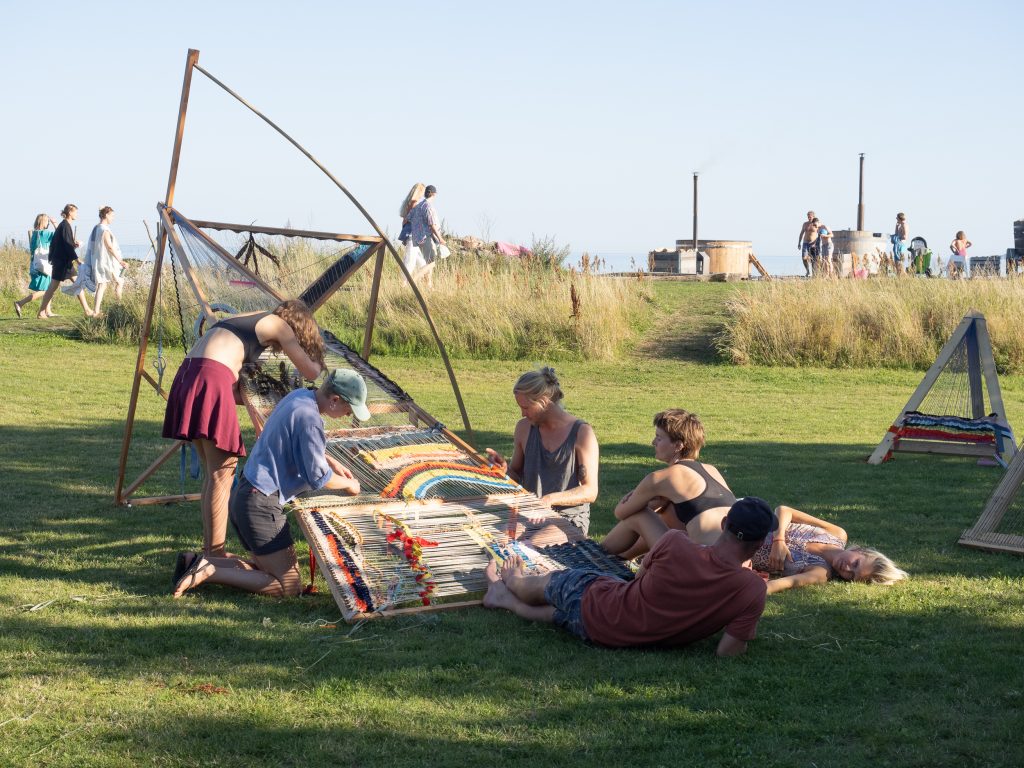
weaving waves
at Den Graenselose Festival, Ebeltoft, Denmark, August 2022 In the frame of the Grænseløse Festival in Ebeltoft, Denmark, the participatory format weaving waves was created in summer 2022. Several weaving frames spatially arranged in relation to one another formed cornerstones around which a permeable and polymorphic space was woven in a collective process with the visitors. Contrary to the con- ventional vertical weaving direction, many possible starting points such as slopes, curves, overlaps and gaps were assumed. Residual materials from local textile production, some of them coloured with natural dyes found in the nearby kitchen, were interwoven with materials washed up on the shores of the surrounding coastal landscape, such as fishing nets and algae. In a radical act of slowness – lying, sitting or standing around the loom – a multilog along human traces of consumption and waste as well as urgent concerns regarding the sustainability of material cycles within art production emerged over a period of 4 days.


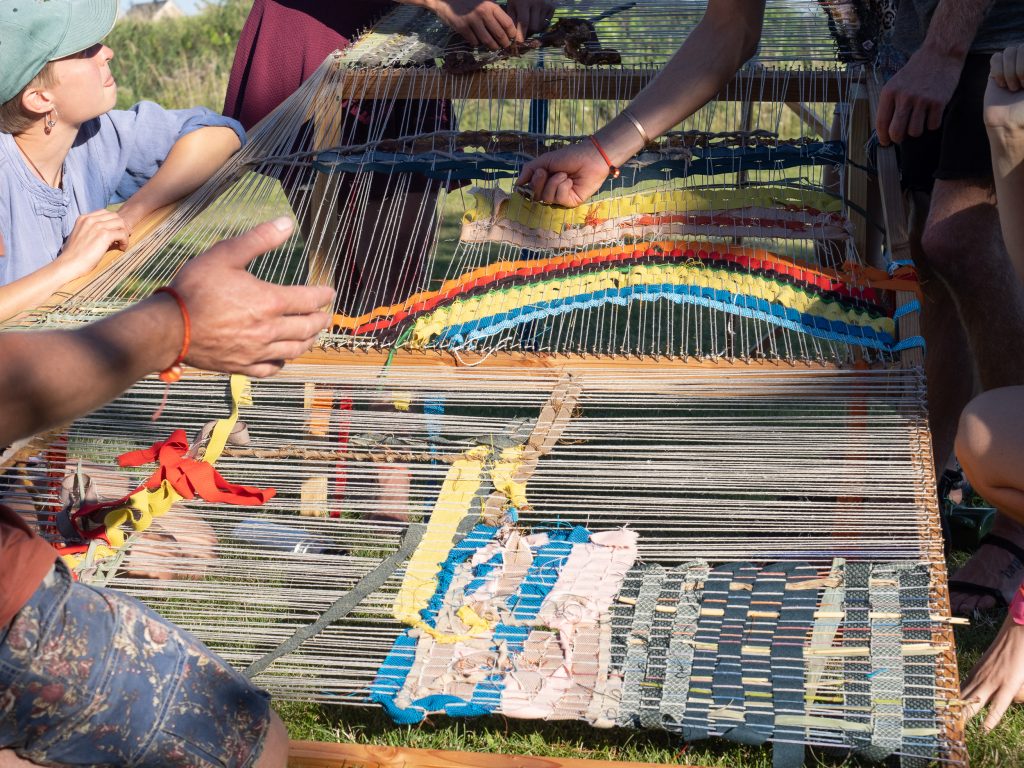
Weaving with algae and leftovers from textile production

